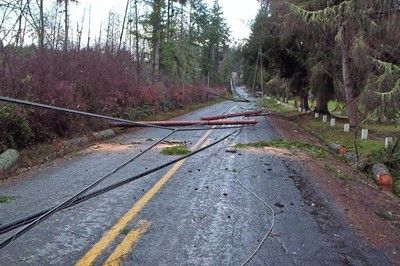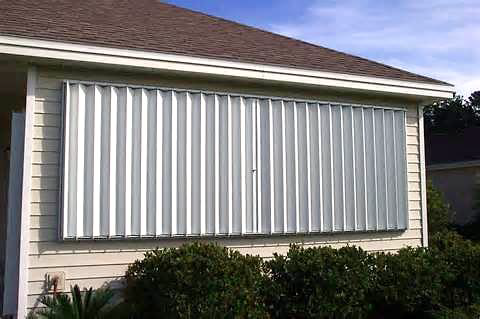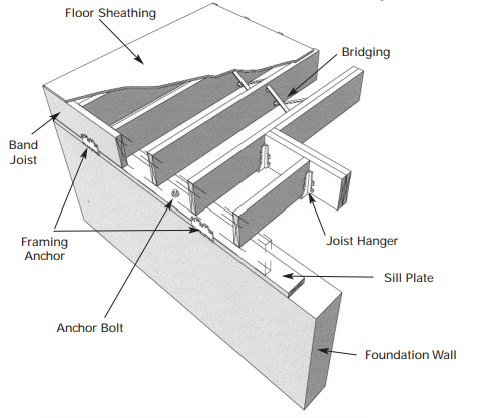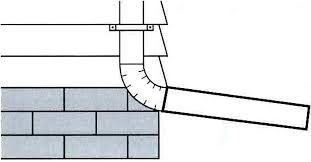Hurricanes and other severe storms each present their own specific dangers to your home. Severe wind and rain are some of the most common symptoms of these natural hazards. Mitigation can keep storms from having catastrophic effects on your home and can help protect your family.
Severe winds can occur at any time or accompany storms like hurricanes, tornadoes, or thunderstorms. Flying debris or downed trees can present a severe threat to lives, property, and utilities. Knowing your risk is an important part of mitigation. Check out your ClimateCheck Property Report to get a good idea of what possible storm risks your property faces.
Heavy rainfall can cause water to seep into your house and damage your belongings. This can be especially dangerous when stormwater overwhelms sewage and wastewater systems or becomes mixed with dangerous pollutants. Many of the hazards from extreme precipitation are due to landslides and flooding. Read this mitigation guide for flood if this is the main concern you have for your home.
Your Action Plan for Hurricane and Storm
In the case of a severe storm, it is important to have an action plan ready for your house, your family and your valuable possessions. When a hurricane is on its way towards your location, there is usually some amount of time to take preventative steps before the storm arrives. Here are some tips:
- Make sure you are properly insured. To help with the claims process, it is a good idea to have a list of your most valuable belongings or document your possessions visually by taking a video of your home.
- Find sources for local weather reports to keep track of the severity and potential path of severe weather in your area. When there is news of an incoming storm, use this information to determine which preventative techniques to take and whether evacuation is necessary. If wind advisory is declared, that means that sustained winds of over 25 miles are predicted.
- Monitor government notices for evacuation orders for your area. Pack a disaster kit ahead of time and bring it with you when you seek shelter. Establish contact lists and meeting points so your family can gather back together if separated.
- Take note of hurricane shelters in your area in case you need to evacuate.
- Protect yourself from power-surge damage by unplugging all appliances and electronics until after the storm is over and power is restored. Adding surge protectors can also protect your electronics from power strikes.
- Take shelter in a safe location. For most homes, your best option will be to move to the middle of your home or your basement, away from windows and glass doors. Take cover under a staircase or a heavy piece of furniture. If you are in a manufactured home, exit your home quickly and find cover elsewhere because manufactured homes can be easily damaged and overturned in high winds.
Wind Mitigation
Severe winds can occur on their own or they can accompany storms like hurricanes, tornados, and thunderstorms. Flying debris and downed power lines and trees can make severe winds a risk to lives, property, and electrical utilities.
The exterior walls, doors, and widows of your home are what protect you from high winds. Wind blowing through your home can put pressure on your roof and walls and cause damage. Both large and small-scale mitigation options can help reinforce your property against severe winds and protect your home for the next time an extreme storm threatens your community.
- Regularly maintain your property before a storm by removing loose debris like tree branches, outdoor furniture, roof shingles, toys, gardening equipment etc. These types of items can be picked up and smashed into your home in high-wind conditions.
- Consult an arborist if you have trees that are older or potentially damaged or unhealthy. Trees can fall during heavy winds and cause extensive damage to structures.
- Adhere to standards for pruning trees around power lines. Downed power lines are very dangerous. If one does occur, keep a wide distance, do not step or jump over downed power lines, and do not touch anything in direct contact with the fallen power line.

- Install storm shutters over all exposed windows and glass surfaces like french doors, glass doors, and skylights. There are many types of effective shutters available through local building supplies retailers, or you can make effective plywood shutters at home. You can also mark and store shutters so that they can easily be installed in the case of a hurricane watch.

- Some roof types are more prone to wind damage than others. A roofing contractor can tell you whether it is a good idea to add reinforcing bracing. You can also install hurricane straps to your roof.
- Garage doors and double-entry doors can fail in high wind conditions. You can add extra protection by adding reinforcement girts and strengthening the wheel tracks in your garage. Double-entry doors can be reinforced with a heavy-duty deadbolt, adding sliding bolts, or using longer hinge attachments on the door and frame.
- Consider building a safe room if you are in an area that is prone to severe winds. A safe room is an area within your home that is reinforced to provide protection from broken glass and flying debris.
- Make sure your house is bolted to your foundation, and is strengthened for shear forces.

- Replace loose rock and gravel near your home with hard surfaces such as pavement or soft materials such as mulch, grass or dirt. Wind blown rocks can cause severe damage to windows, siding and can cause injury.
- Anchor any outdoor fuel tanks, sheds, playground equipment or other items that could blow over or be blown into your home.
- Consider retrofitting options like impact resistant windows and hurricane shutters.
Extreme Rain Mitigation
Regular maintenance of your home and small changes can make a huge difference in protecting your home from rainwater. Protecting from heavy rain requires waterproofing your home as much as possible and making sure that your property drains water effectively and quickly. FEMA flood maps can indicate your risk of more severe flood damage.
Another necessary step towards protecting your home from damage is to make sure that your lawn and property is draining water properly. Signs of water drainage issues could be large pooling puddles in your backyard, or other telltale signs such as drifting mulch, overflowing gutters, soggy ground, flaking basement walls, basement leaks, mildew odors, or mold. If you are noticing severe or ongoing damage, contact professionals to inspect your home and provide an expert opinion of the best solutions for your problem.
Some typical improvements to protect from extreme rain damage are as follows:
Waterproofing
- Make sure your roof and chimney are in good condition. Seal any gaps to prevent rainwater from seeping in. Consider sealing your roof deck.
- Check seals around windows and doors to make sure they are intact. Weep holes at bottoms of windows should be clean to prevent water intrusion.
- If your home has air conditioners, ensure that there is proper caulking and weather stripping and that the unit is installed with a 2 degree bubble tilt toward the outside.
Gutters and Downspouts
- Run a hose through gutters routinely to check flow. If there is standing water, adjust the gutters so they gently slope toward the downspout to allow the water to drain.
- Clean gutters and downspouts on a regular basis, ideally twice a year in the spring and fall. Establish a fixed schedule for seasonal maintenance.
- Keep trees trimmed and away from the roof to prevent leaves from clogging the gutters.
- Ensure downspouts route water away from your home with extensions to prevent water from accumulating at the foundation or entering the basement. Your area may recommend disconnecting downspouts from the sewer to avoid backups during heavy storms.

Site drainage
- Check property drainage to ensure proper water flow and prevent your home from being flooded. If you are experiencing issues, check the grading of your lawn to ensure that your landscaping has a subtle slope to shed water away from your home. You may also want to check that runoff from your neighbors’ yards is not flowing into your property.
- Identify if you have soil drainage issues. Clay soil, hardpan soil, or any type of soil that is extremely compacted can cause drainage issues. Compacted soil can be caused by improper watering, repeated plowing, pollution, heavy construction machinery, or environmental changes.
- To ensure water is diverted from your foundation, make sure the ground slopes away from your house, and that any low or flat areas have proper drainage. If drainage is an issue, install perforated pipe around your home’s perimeter to take water away from your foundation.
- Create a rain garden to help slow down, collect, and filter rainwater. Rain gardens consist of mulch and layers of soil and plants that can tolerate wet environments.
Conclusion
Investments in mitigation against storms can help your home avoid larger, more expensive damage from wind and rain in the future. Take action now to defend yourself and your family before the next big storm threatens. To learn how to protect your home from other severe weather risks, see our other mitigation guides.